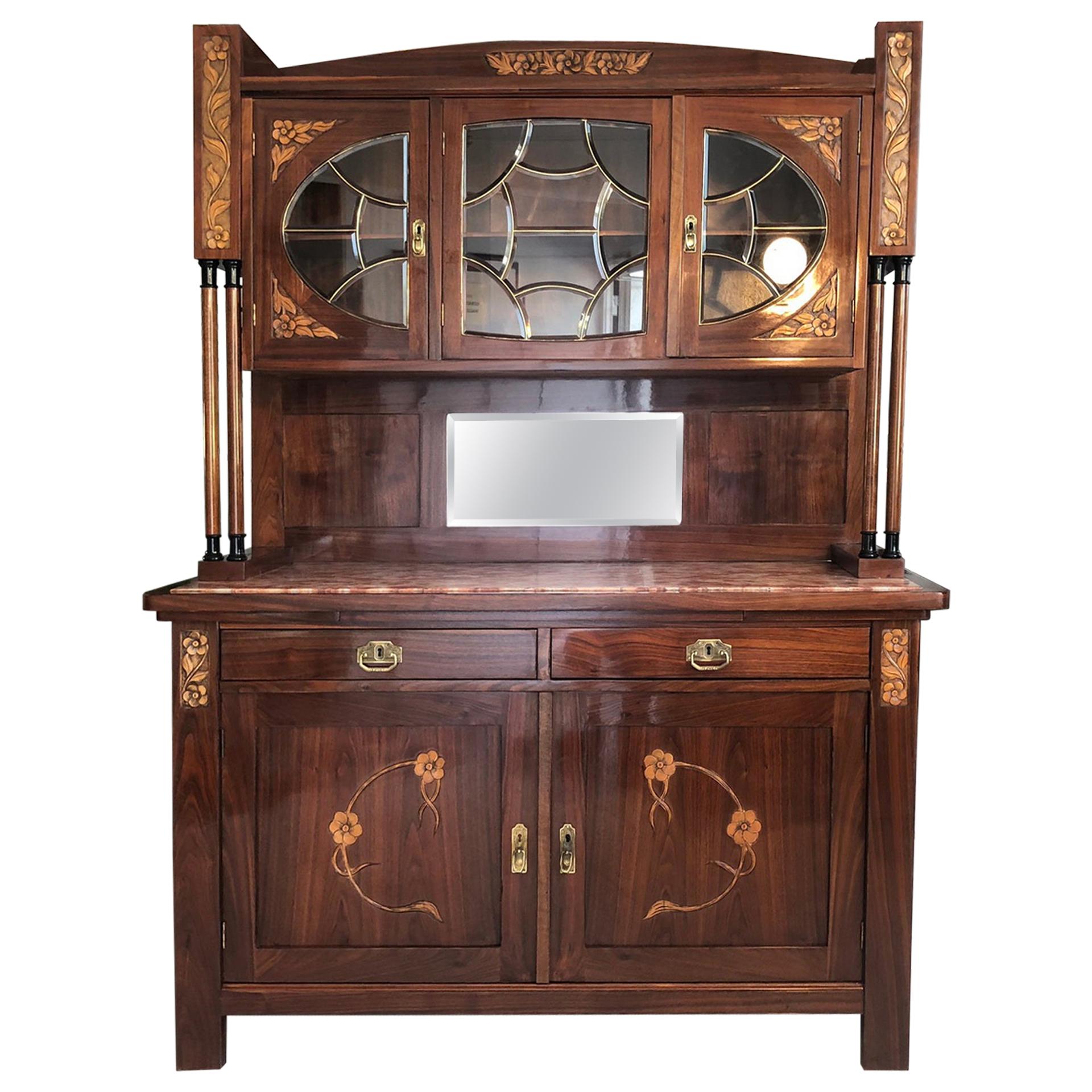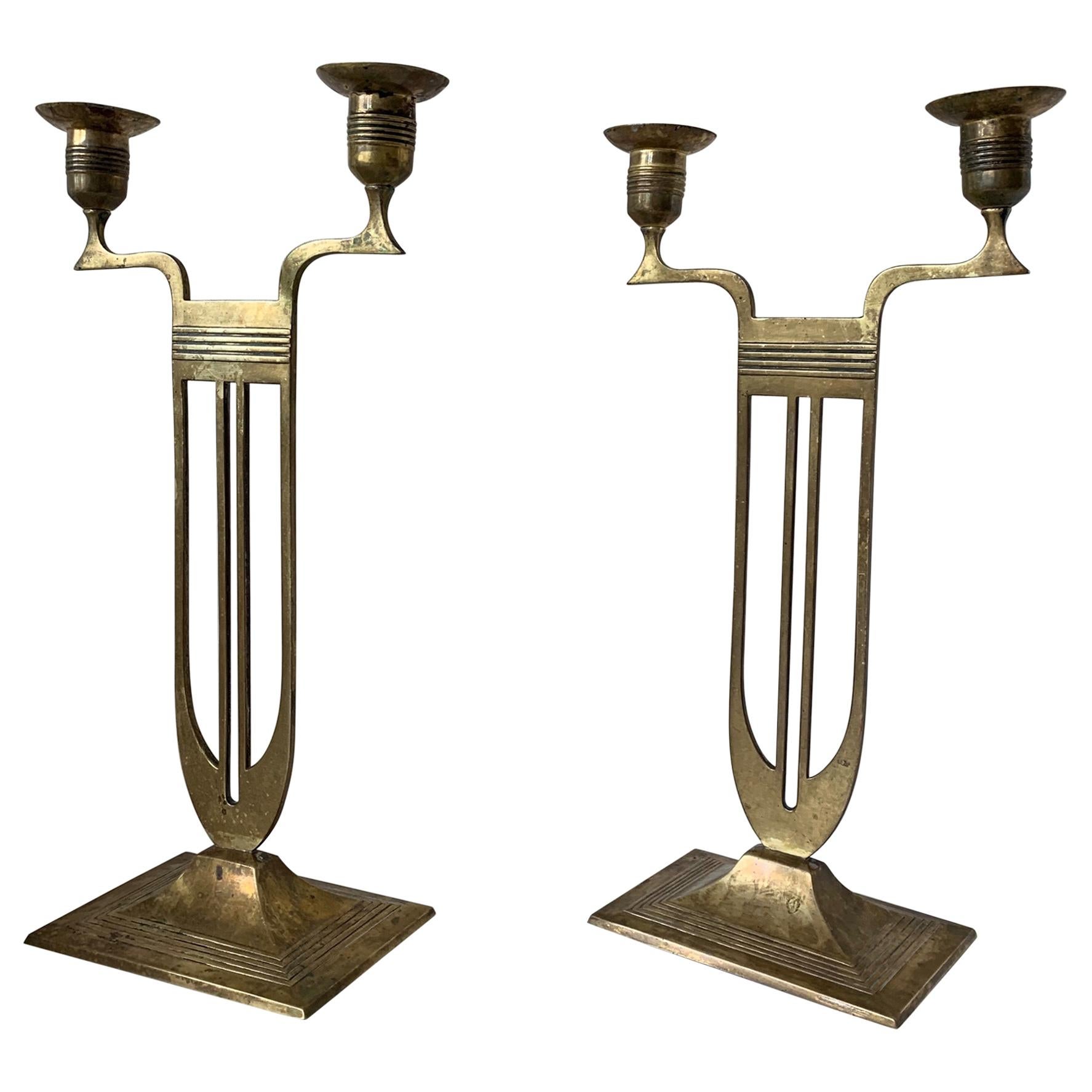

In 1903, Hoffmann and Moser founded the Wiener Werkstätte as a fine-arts society with the goal of reforming the applied arts (arts and crafts). In 1900, he obtained Hessian citizenship and did not work in Austria again.

In 1899, Olbrich left Vienna to join the Darmstadt Artists’ Colony. The Klimt frieze has been restored and can be seen in the gallery today. A statue of Beethoven by Max Klinger stood at the center, with Klimt's Beethoven frieze mounted around it. The 14th Secession exhibition in 1902, designed by Josef Hoffmann and dedicated to Ludwig van Beethoven, was especially famous. This helped make the French Impressionists and others familiar to the Viennese public. It was the first dedicated gallery of contemporary art in the city. The architect was Joseph Maria Olbrich, a student of Otto Wagner and his domed gallery building, with a sculptural frieze over the entrance, in the center of Vienna, became the symbol of the movement. The first architectural project of the Secession was the creation of an exhibit space which would introduce international artists and art movements to Vienna. The established painter Rudolf von Alt, eighty-five years old, was chosen as the Honorary President of the group, and he led a delegation with an invitation to the Emperor Franz-Joseph to attend the first Exposition. Other founding or early members included the architect Josef Hoffmann, the designer Koloman Moser, the designer and architect Joseph Maria Olbrich, and the painters Max Kurzweil and Alphonse Mucha, who resided in Paris and was already famous for his Art Nouveau posters. It is not a debate over aesthetics, but a confrontation between two different spiritual states." Īt the beginning, the Secession had fifty members, and at its first elected the painter Gustav Klimt as its president. The choice between commerce and art is the issue at stake in our Secession.

Bahr wrote, "Our art is not a combat of modern artists against those of the past, but the promotion of the arts against the peddlers who pose as artists and who have a commercial interest in not letting art bloom.

The goals of the new movement in Vienna were expressed by the literary critic Hermann Bahr in the first issue of the new journal begun by the group, called Ver Sacrum ("Sacred Spring"). The movement took its name from Munich Secession movement that was founded in 1892. The goals stated at the founding included establishing contact and an exchange of ideas with artists outside Austria, disputing artistic nationalism, renewing the decorative arts creating a "total art", that unified painting, architecture, and the decorative arts and, in particular, opposing the domination of the official Vienna Academy of the Arts, the Vienna Künstlerhaus, and official art salons, with its traditional orientation toward Historicism. The architect Otto Wagner joined the group shortly after it was founded. The Vienna Secession was founded on 3 April 1897 by artist Gustav Klimt, designer Koloman Moser, architects Josef Hoffmann and Joseph Maria Olbrich, Max Kurzweil, Wilhelm Bernatzik and others. In its current form, the Secession exhibition gallery is independently led and managed by artists. In 1905 the group itself split, when some of the most prominent members, including Klimt, Wagner, and Hoffmann, resigned in a dispute over priorities, but it continued to function, and still functions today, from its headquarters in the Secession Building. Their official magazine was called Ver Sacrum ( Sacred Spring, in Latin), which published highly stylised and influential works of graphic art. Their most influential architectural work was the Secession Building designed by Joseph Maria Olbrich as a venue for expositions of the group. They resigned from the Association of Austrian Artists in protest against its support for more traditional artistic styles. The Vienna Secession ( German: Wiener Secession also known as the Union of Austrian Artists, or Vereinigung Bildender Künstler Österreichs) is an art movement, closely related to Art Nouveau, that was formed in 1897 by a group of Austrian painters, graphic artists, sculptors and architects, including Josef Hoffman, Koloman Moser, Otto Wagner and Gustav Klimt. Gustav Klimt, Joseph Maria Olbrich, Josef Hoffmann, Otto Wagner Top: Secession Building in Vienna designed by Joseph Maria Olbrich (1897–1898) Bottom: Excerpts of the Beethoven Frieze by Gustav Klimt (1902)


 0 kommentar(er)
0 kommentar(er)
